Who Am I?
A nearly inevitable aspect of human life (often experienced in adolescence or in midlife) is an identity crisis characterized by the question: Who am I? Although this identity crisis is often interpreted as a search for meaning or direction in life, in its purest form, it is a search for identity. At its core, the issue of identity is like a mathematical equation: I am=What? With the rigor of a mathematical identity, just exactly What am I? Am I my body? Am I my mind or my thoughts? Am I my behaviors or my emotions? Am I my personality? Am I my body-based mentally constructed emotionally energized self-concept? Am I all of these things or none of these things? The problem with an identity created from thoughts, behaviors, emotions, personality or a body-based mentally constructed self-concept is that these things change from moment to moment, and when looked back upon (as they’re held in memory) are often conflicted and contradictory. How can I be all of these conflicting and contradictory things? If I am not any of these things, then how can I be none of these things? How can I be anything or nothing at all?
An identity crisis is almost certain to occur when the conflicted and contradictory nature of the thoughts, behaviors, emotions, personality or mentally constructed self-concept (as these things change from moment to moment) are clearly seen. The really big questions are: Who is seeing these things? How is it possible that I can be what is seeing these things and also be the things being seen? The very simple answer is: it’s not possible. Either I am whatever is seeing these things or I am the things that are being seen. If I am not seeing them, then who is seeing them? A moment of reflection should be enough to convince yourself that you are what is seeing these things, but then you cannot be whatever is being seen.
How is this state of affairs even possible? Attempts to answer this question have been made throughout the ages (most famously by Plato in the Allegory of the Cave), but now in the twenty-first century, it is finally possible to give a credible scientific answer consistent with all scientific knowledge known to humankind.
This scientific answer is strange because modern science (especially quantum theory and relativity theory) are strange (and become stranger yet when unified) but what this unification tells us is not significantly different than what Plato told us about this strange answer over two millennia ago. The strange answer given by Plato is the observed things are like the animated images of a movie that are displayed on a viewing screen, while the observer of the things (what is seeing those things) is always present outside the screen at a point of view. What is present at the point of view (that always arises in relation to the viewing screen) is not itself an observable thing, but instead is the potentiality to observe things. This potentiality to perceive observable things is what we call consciousness.
The answer that allows us to solve the identity crisis question (Who am I?) with the rigor of a mathematical solution (I am=What?) is consciousness. This solves the question (Who am I?) unequivocally as I am=Consciousness. Although this is an elegant solution to an apparently intractable problem (a problem that only appears intractable if we assume that only observable things exist), there are still two big difficulties with this solution that create confusion. The problem is not really intractable, but only appears that way due to confusion. This confusion is about the nature of what exists (the assumption that only the observable things exist).
The first confusing difficulty has to do with the nature of the things being seen. If consciousness is the nature of what sees things, then what is the nature of the things being seen? Modern physics now gives a straightforward answer to this question. The second difficulty is about the manner with which consciousness sees things. Again, modern physics suggests the only possible answer to this question. When things are being seen, consciousness exists at a point of view that arises in relation to a viewing screen upon which those things are displayed (like the animated images of a movie), but when the things are not being seen, consciousness exists in an undifferentiated state that is like an empty space of potentiality (within which both the point of view and the viewing screen arise).
The only reason this elegant solution creates confusion is because it tells us that consciousness does not really exist as an observable thing. Consciousness does indeed exist, but that existence is not as an observable thing. Consciousness exists as the potentiality to observe the observable things. When the observable things are being seen, that potentiality to observe exists at a point of view that arises in relation to a viewing screen upon which the images of things are being displayed (like the images of a movie), but when the things are not being seen, consciousness exists in an undifferentiated state that is like an empty space of potentiality (within which both the point of view and the viewing screen arise).
To be clear about things, this empty space of potentiality is the potentiality to create everything that appears in a world (a world that is perceived on a viewing screen like the animated images of a movie) and the potentiality to perceive that world from the central point of view of the observer of that world (a point of view that arises in relation to the screen). Unlike the consciousness of the observer (which is always individual or differentiated) the consciousness of this empty space of potentiality can only be described as undifferentiated. This potentiality to create and perceive a world is the nature of undifferentiated consciousness.
Although this answer may seem strange, this is exactly what modern physics (specifically quantum theory) is telling us. Oddly, the observable things do not really exist (except in the sense of a quantum state of potentiality) until they are being observed, and it is consciousness that must observe them. This tells us that consciousness must exist before the observable things can even come into existence. Consciousness must exist first before the observable things can come into existence. This tells us the existence of consciousness is primordial, and consciousness does not really exist in the form of some observable thing.
The only part of this explanation that is not a standard part of modern physics is the primordial existence of consciousness is undifferentiated, and that this primordial, undifferentiated nature of consciousness is identical to what physicists call the void.
The first confusing difficulty with this answer is about the nature of the observable things (as they are displayed on a viewing screen like the animated images of a movie). The recent breakthrough in modern physics that explains how the form of all observable things are displayed on a viewing screen is called the holographic principle (discovered about 20 years ago in an attempt to unify quantum theory with relativity theory and to explain the thermodynamic properties of black holes that arise as a consequence of that unification). The holographic principle is the fundamental principle that explains the nature of all the observable things.
Although we normally think of the world as composed of matter and energy that exist within a space-time geometry, and think of matter and energy as composed of some kind of fundamental particles, like electrons and photons, that is not what the holographic principle tells us about the nature of the world. The holographic principle is more fundamental than matter, energy, or space-time geometry. This fundamental principle explains the nature of all matter, energy and space-time geometry, and so it helps to review exactly what it is telling us about the world.
Let’s start with space-time geometry. Relativity theory is the branch of physics that describes the space-time geometry of the world, but the holographic principle is more fundamental than relativity theory. The way relativity theory describes the space-time geometry of the world is in terms of Einstein’s field equations for the space-time metric. The space-time metric is a measure of the curvature of space-time geometry, which allows us to measure the distance along some path that arises in a curved space-time geometry, like the path of a geodesic (a great circle) on the surface of a sphere. The surprising thing is the space-time metric is the gravitational field that represents the force of gravity.
The space-time metric is a field just like any of the particle fields that arise in the quantum field theory description of particle physics (for example Maxwell’s field equations for electromagnetism that represent the photon and Dirac’s field equations that represent the electron). We understand that particle excitations arise from all fields as excitations of field energy (called a wave packet) that is localized in space and time and is quantized in terms of energy and momentum.
In much the same way the photon is the force particle of electromagnetism (that arises as a localized excitation of electromagnetic field energy) we can imagine the graviton is the force particle of gravity (that arises as a localized excitation of gravitational field energy). In this sense, the space-time metric is the gravitational field (which obeys Einstein’s field equations for the space-time metric just like the electromagnetic field obeys Maxwell’s field equations), and the force of gravity is nothing more than the (quantized) curvature of space-time geometry.
Einstein’s field equations for the space-time metric describe the space-time geometry of the world, but also represent the force of gravity in the world. We understand the force of gravity arises as the curvature of space-time geometry. The reason particles follow curved paths when influenced by gravity is because space-time geometry is curved and the shortest distance between two points in a curved space-time geometry is a curved path. This space-time curvature is what the space-time metric measures. While particles follow curved paths in a curved space-time geometry, the mass and energy of the particles in that geometry are what curves that geometry, so the motion of the particles and the curvature of the geometry are coupled together. This is how we understand the nature of gravity.
All of this is described by Einstein’s field equations for the space-time metric. The big question is: are Einstein’s field equations fundamental? Until the holographic principle was discovered, most physicists thought Einstein’s field equations were about as fundamental as physics gets, but we now know they are not. Einstein’s field equations are not fundamental, but are derivative of the holographic principle.
Physicists describe this state of affairs as a duality. The basic idea is any region of space is bounded by a bounding surface of space, like the volume inside a sphere is bounded by the surface of the sphere. Einstein’s field equations for the space-time metric describe the nature of gravity in the bounded space, but there is an alternative (dual) description defined on the bounding surface. The surface description is the essence of the holographic principle. Einstein’s field equations describe gravity in the bounded space, but the surface (holographic) description (defined on the bounding surface) is the more fundamental description of gravity.
The holographic principle simply says the bounding surface defines the nature of gravity in the bounded space in terms of the bits on information encoded on the bounding surface. Bits of information are encoded in a binary code of 1’s and 0’s in a pixelated way (just like the bits of information encoded on a digital computer screen), where each pixel on the screen encodes a single bit of information.
The total number, n, of bits of information encoded is given in terms of the screen area, A, as n=A/4ℓ2, where ℓ2=ћG/c3 is the Planck area (given in terms of Planck’s constant, the gravitational constant and the speed of light). This tells us the pixel size is about a Planck area. The remarkable discovery of modern physics is this relation for how bits of information are encoded on a bounding surface of space implies Einstein’s field equations for the space-time metric in the bounded space.
Einstein’s field equations for the space-time metric in the bounded space arise from the bits of information encoded on the bounding surface of that space as a thermodynamic average. The second law of thermodynamics is a very general statistical relation that describes how the entropy of any region of space changes as heat energy flows through that space (for example under the influence of a thermal gradient). As heat energy flows under the influence of a thermal gradient (from a hotter region to a colder region), the entropy of that region of space tends to increase (the region becomes more disordered in terms of the way information is organized in that region of space). For example, a snowball becomes more disordered (it turns into a puddle of water) as heat flows into the snowball. Increased entropy (disorder) can occur at a constant temperature, as a snowball can melt at the melting point of water. Increased disorganization has to do with the breaking of electromagnetic (chemical) bonds between charged particles, which requires energy.
The holographic principle tells us that the maximum entropy of any region of space is defined in terms of the number of bits of information encoded on the bounding surface of that space as n=A/4ℓ2. Entropy is defined in terms of the area, A, of the bounding surface. As heat energy flows through that bounding surface, the second law of thermodynamics tells us the entropy of that region of space must also change, which implies the surface area must change. As the surface area changes, the geometry of the bounded space must also change.
Remarkably, this simple relationship implies Einstein’s field equations for the space-time metric in the bounded space, but only as a thermodynamic average, which is called a thermodynamic equation of state. Einstein’s field equations in the bounded space are a direct consequence of encoding bits of information on the bounding surface in a pixelated way, and arise as a thermodynamic average.
This tells us Einstein’s field equations for the space-time metric in the bounded space are not really fundamental, but only arise as a thermodynamic average. Einstein’s field equations only have a limited (low energy) range of validity. The more fundamental description is in terms of the bits of information encoded on the bounding surface of that space, which is the holographic principle.
What about the other field theories that describe the nature of particle physics, like Maxwell’s field equations of electromagnetism for the photon or Dirac’s field equations for the electron? The answer is the unification of the laws of physics solves this puzzle. The only known mechanisms of unification are the Kaluza-Klein mechanism (extra compactified dimensions of space) and super-symmetry. All the usual quantum field equations of the standard model of particle physics are generated from Einstein’s field equations from these unification mechanisms.
If we apply the Kaluza-Klein mechanism and super-symmetry to Einstein’s field equations for the space-time metric, this generates all the usual quantum field equations of particle physics (like Maxwell’s equations for the photon and Dirac’s equations for the electron). To generate the strong and weak nuclear forces in addition to the electromagnetic force requires six extra compactified dimensions of space. Super-symmetry generates all the fermion fields in addition to boson fields when spatial coordinates have both commuting and anti-commuting aspects. Even the Higgs fields are generated when non-commutative geometry is invoked. The final result of unification is called 11 dimensional super-gravity, which is understood as a low energy limit. This low energy limit (which describes the nature of gravity, the electromagnetic force, and the nuclear forces in the bounded space) is now understood to arise (as a thermodynamic average) from the holographic principle (the way bits of information are encoded on the bounding surface of that space).
This state of affairs is called a duality. Within the bounded space, the usual laws of physics govern the behavior of everything perceived within that space. For example, the law of gravity is governed by Einstein’s field equations for the space-time metric, while the laws of electromagnetism and the nuclear forces are governed by the usual quantum field theories (like quantum electrodynamics) that represent the standard model of particle physics.
The problem with this description of what appears to happen in the bounded space is the holographic principle tells us this description is only a low energy limit that arises as a thermodynamic average. The more fundamental description is the holographic description of bits of information encoded on the bounding surface of that space.
How are we to understand what appears to happen in the bounded space in terms of the holographic principle? It helps to review what quantum theory and the usual laws of physics tell us about what appears to happen in the bounded space. The standard interpretation of quantum theory tells us that everything in that bounded space is characterized by a quantum state of potentiality. For example, everything in the bounded space is a bound state of fundamental particles (like electrons and photons) and those particles are represented by quantum fields that obey field equations. We understand particles are localized excitations of field energy (a wave packet).
The standard interpretation of quantum theory tells us this excitation of field energy (the wave packet) specifies the quantum probability (a probability wave) with which the particle can be measured (observed) at some point in space at some moment of time. The actual measurement (observation) of the particle at some point in space and some moment of time is called the collapse of the wave function (a quantum state reduction), as the probability wave collapses to some specific space-time point. The probability wave (the wave function) only specifies the quantum probability with which this wave function collapse can occur. The standard interpretation of quantum theory says the collapse occurs randomly, which is like the random (unbiased) measurement of a probability distribution.
The dilemma of the standard interpretation of quantum theory is that it does not address the nature of the observer. Quantum theory tells us about the nature of all observables (like a particle measured at some point in space at some moment of time) and the nature of that observation (as the collapse of the particle’s wave function), but tells us nothing about the nature of the observer. Quantum theory does not even address how the collapse of the wave function occurs or what collapses the wave function. Does the observer collapse the wave function?
This dilemma is not totally unexpected since the wave function (as represented by a quantum field probability wave for the case of a fundamental particle) is not really a fundamental thing. The Kaluza-Klein mechanism and super-symmetry tell us all quantum fields are components of the space-time metric. For the usual 3+1 extended dimensions of space-time, the space-time metric represents the gravitational field, but with extra compactified dimensions of space, the space-time metric also represents all the quantum fields of the standard model of particle physics (which includes the electromagnetic and nuclear forces). The problem is the space-time metric only arises as a low energy limit (as Einstein’s field equations arise as a thermodynamic average) in the bounded space from the holographic way in which bits of information are encoded on the bounding surface of that space.
What then is the holographic principle telling us about the nature of observation in the bounded space? The answer seems strange, but there is no other possible answer. The observation of anything in that bounded space is like the projection of an image displayed on a holographic screen to the central point of view of an observer. A holographic screen is a bounding surface of space that encodes bits of information. An image displayed on a holographic screen is composed of bits of information encoded on the screen. Until observed, that image only exists in a quantum state of potentiality (like a quantum field wave function) that describes all possible ways bits of information can become encoded on the screen).
The actual observation of the image by an observer (like the collapse of the wave function) reduces the quantum state of potentiality to an actual observable state (an observable image defined by the way bits of information are actually encoded on the screen). The observation of the image by an observer thus corresponds to the projection of the image from the holographic screen to the point of view of an observer. This observation of the image by an observer is like a screen output from the holographic viewing screen to the point of view of the observer.
There are three aspects of the nature of observation the holographic principle helps to clarify. The first aspect: What is the nature of a holographic screen (that encodes all the bits of information that are organized into the observable form of images)? The second aspect: What is the nature of a screen output (that projects the images from the screen to the point of view of an observer)? and How are the screen outputs ordered in a sequence (like the animated frames of a movie that are displayed on a screen)? The third aspect: What is the nature of the observer (that observes those images)? These three aspects will be discussed in turn.
The first aspect of the nature of observation is described by relativity theory. A holographic screen is a bounding surface of space encoding bits of information, which relativity theory describes as an event horizon, like a black hole horizon. Since we want to discuss the world and not black holes, instead of black hole horizons we need to discuss cosmic horizons. While black hole horizons arise from the force of gravity, cosmic horizons arise from the force of dark energy.
Dark energy is like a repulsive force of anti-gravity that causes space to expand. Although this seems strange, relativity theory describes the effect of dark energy (called a cosmological constant) in terms of the exponential expansion of space. Space appears to expand away from an observer (at the central point of view) at an accelerated rate. The farther out in space the observer looks at things, the faster space appears to expand away from the observer. At some point, space appears to expand away from the observer at the speed of light. Since nothing can travel faster than the speed of light, this point defines the boundary of a cosmic horizon that limits the observer’s ability to see things in space.
How can space appear to expand? Relativity theory gives the answer in terms of the curvature of space-time geometry, which is measured by the space-time metric. Einstein’s field equations for the space-time metric give a description of this geometric curvature. In effect, space appears to contract with the attractive force of gravity, while space appears to expand with the repulsive force of dark energy. This apparent contraction or expansion of space occurs relative to the point of view of an observer.
Just as the event horizon of a black hole represents a boundary in space where the contraction of space (due to the attractive force of gravity) is so strong that even light cannot cross the boundary (and escape away from the black hole as observed from the point of view of a distant observer), so too a cosmic horizon represents a boundary in space where the expansion of space (due to the repulsive force of dark energy) is so strong that even light cannot cross the boundary (and reach the central point of view of an observer).
In contrast to a black hole horizon (defining a region of space from which light cannot escape as observed by a distant observer), a cosmic horizon could be understood as a white hole (defining a region of space into which light cannot enter as observed by the observer at the central point of view), but in light of the holographic principle, a cosmic horizon is best understood as defining a region of space for an observer and its observable world.
The strange thing relativity theory tells us about dark energy is every observer is at the central point of view of its own cosmic horizon. The cosmic horizon is a bounding surface of space that surrounds the observer at the central point of view and limits the observer’s observations of things in space. This limitation in the observer’s observations of things is due to the limitation of the speed of light (which is like the maximal rate of information transfer in a computer network) and the exponential expansion of space (which is unlimited). Since every observer is surrounded by its own cosmic horizon, the horizon is called observer-dependent.
The holographic principle tells us the observer’s cosmic horizon is a bounding surface of space that acts as a holographic screen encoding bits of information for everything the observer can possibly observe in that bounded space. Each observation of something is like a screen output (that projects the image of the thing) from the holographic screen to the central point of view of the observer.
Just like a screen output from a computer screen, the image is projected to the point of view of an observer. Just like an image displayed on a computer screen, the image is composed of bits of information. Just like a movie displayed on a computer screen, the image is animated over a sequence of screen outputs.
It helps to examine the holographic principle more closely and examine exactly how bits of information are encoded on a bounding surface of space that acts as a holographic screen. Although the holographic principle was first demonstrated in string theory (now called M-theory), it is much more general than any specific theory and is a property of any unified theory that includes gravity (which means it is a property of all geometric theories that unify relativity theory with quantum theory). The most general way to understand the holographic principle is with a non-commutative geometry (of which string theory or M-theory is a special case).
The basic idea is that position coordinates on a bounding surface of space (like a cosmic horizon) can be represented by non-commuting variables. This is just like the dynamical variables defined in quantum theory (the position and momentum of particles as represented by non-commuting operators). The difference is the non-commuting variables defined in a non-commutative geometry represent the position coordinates of space itself, while the non-commuting operators defined in quantum theory represent the position and momentum of particles localized in a space-time geometry. Quantum theory allows us to understand how position and momentum of particles are quantized, but does not allow us to understand how space-time geometry is quantized. In this sense, non-commutative geometry is to ordinary space-time geometry (whether curved or not) as quantum theory is to classical (Newtonian) physics, and is the natural way to unify relativity theory with quantum theory and understand how a space-time geometry is quantized.
If the bounding surface of space is a spherical surface, position coordinates can be represented by an (x, y) coordinate system (like latitude and longitude on the surface of a sphere). In a non-commutative geometry, the coordinates obey an uncertainty relation of the form ΔxΔy≥ℓ2 (analogous to the uncertainty relation between the position, x, and momentum, p, of a particle in ordinary quantum theory ΔxΔp≥ћ). The amount of coordinate uncertainty is defined by the Planck area, ℓ2=ћG/c3. This coordinate uncertainty smears out the (x, y) point into a pixel (area element) of size ℓ2. The (x, y) position coordinates defined on the bounding surface are no longer points, but are smeared out into n pixels of size ℓ2. These n pixels correspond to the n non-commuting variables that define the geometry.
The holographic principle specifies the number of pixels, n=A/4ℓ2, in terms of the area of the bounding surface. Each pixel encodes a bit of information in a binary code of 1’s and 0’s. In a non-commutative geometry, this information is specified by the n eigenvalues of an nxn matrix. Since a 2×2 matrix can represent spin in quantum theory and encode information in a binary code (the two eigenvalues of the 2×2 matrix represent spin up and down, like a switch that is either on or off), the n eigenvalues of an nxn matrix can also encode information in a binary code.
An interesting aspect of the quantization of space-time geometry that follows from the holographic principle (and non-commutative geometry) is this mechanism cures the infinities of quantum field theory. If space-time geometry is a continuum, there are an infinite number of space-time points in any finite region of space-time, and so there are an infinite number of field variables, ψ(x, t), defined at the space-time points, each of which is a dynamical variable. With the holographic principle, any finite region of space is bounded by a surface of space defining a finite number of bits of information (one bit per pixel on the surface), and so there are a finite number of dynamical variables (the n bits of information defined by the eigenvalues of an nxn matrix in non-commutative geometry). With the holographic principle, the bounding surface acts as a holographic screen and each event in time is understood as a screen output, so the apparent continuum of space-time points is reduced to a finite number of bits of information defined on the screen and a finite number of screen outputs.
It’s worth a brief review of the second law of thermodynamics as it applies to the holographic principle, as it answers many questions. Basically, the second law is a statistical (thermal average) description of how bits of information (describing the nature of things in any region of space) become more disordered as heat (thermal energy) flows through that region of space. This description is written as a mathematical relation that involves entropy, S, (which measures the number of bits of information needed to describe things in a region of space), heat content, Q, (which measures the random kinetic or thermal energy of motion of things in that region of space), and absolute temperature, T, (which also measures the random thermal motion of things). This relation describes how entropy changes, ΔS, with the transfer of heat, ΔQ, as ΔQ=TΔS.
It’s this simple relation that implies Einstein’s field equation in any bounded space from the way bits of information are encoded on the bounding surface of that space. The holographic principle tells us the entropy of any bounded region of space is determined by the surface area, A, of the bounding surface as S=kn=kA/4ℓ2, where k is called Boltzmann’s constant. As heat flows through the bounding surface and the heat content, Q, of the bounded space changes at some absolute temperature T, there must be a corresponding change in the entropy, S. Since entropy is defined by the surface area, A, of the bounding surface, that surface area must change as heat flows through the bounding surface, and so the geometry of the bounded space must also change. This change in the geometry of the bounded space is described by Einstein’s field equations for the space-time metric, which relates a change in the space-time geometry of that space to a change in energy content of that space.
This simple relationship, ΔQ=TΔS, also allows us to calculate the absolute temperature of the bounding surface as observed by a distant observer. The reason the bounding surface has a temperature is because bits of information encoded on the surface are encoded in a binary code of 1’s and 0’s, just like switches that switch back and forth between the on and off positions, or spin variables that switch back and forth between the up and down positions. The absolute temperature of the surface measures the thermal energy (random kinetic energy) with which the bits of information switch back and forth. This thermal energy corresponds to the thermal energy of motion of all the things observed in the bounded space. The observed motion of all those things in the bounded space is determined by the way bits of information are encoded on the bounding surface. The total number of bits of information encoded is given in terms of the surface area, A, as n=A/4ℓ2, and the entropy as S=kn. The smallest possible change in entropy is given by Δn=1.
As observed by a distant observer, this smallest possible change in entropy corresponds to the radiation of thermal energy away from the surface. Quantum theory tells us the energy of this thermal radiation is quantized in terms of the frequency, f, of the radiation as E=hf. For the radiation of light (thermal photons), frequency is related to the wavelength, λ, of light waves as f=c/λ, and so E=hc/λ. The energy (heat transfer) of the smallest possible thermal photon that can be radiated away from the surface is then given by ΔQ=hc/λ. For this smallest possible change in entropy, Δn=1, the relationship ΔQ=TΔS then tells us that the absolute temperature of the surface is kT=hc/λ.
How do we calculate the wavelength of the smallest possible thermal photon that can be radiated away from the surface as observed by a distant observer? The simplest way to understand this calculation is for a black hole, but the analysis for a cosmic horizon is much the same. A black hole horizon is a bounding surface of space where the force of gravity is so strong that even light cannot cross the horizon and escape away from the black hole as observed by a distant observer. Light inside a black hole horizon is gravitationally bound to the black hole. This bound up light must have a wavelength that is less than the size of the black hole horizon.
A light wave that is just barely bound to the black hole and is just barely able to escape away has a wavelength about equal to the size of the horizon. For an event horizon of radius R, this size corresponds to the circumference of the horizon, and so the wavelength of a light wave that is just barely able to escape away from the black hole is given by λ=2πR.
A light wave that is just barely able to escape away from the black hole corresponds to the smallest possible thermal photon that can be radiated away from the surface of the horizon. If we put these results together, we find the absolute temperature of the horizon surface is given in terms of the horizon radius as kT=ћc/2πR. This temperature corresponds to the thermal energy of all the bits of information encoded on the surface (as they tend to switch back and forth between 1 and 0), but also to the thermal energy of motion of all the things observed within the bounded space (which are encoded for by the bits of information encoded on the bounding surface).
Although the approach here is to assume the holographic principle (the way bits of information are encoded on a bounding surface of space) which then implies Einstein’s field equations in the bounded space (the nature of gravity), we can also use the reverse approach. From Einstein’s field equations we can infer the holographic principle. The basic idea is to examine the entropy of a black hole.
For a black hole of mass M, Einstein’s field equations give the radius of the black hole’s horizon as R=2GM/c2. An easy way to see this is in terms of the escape velocity of a particle of mass m that moves in the black hole’s gravitational field. Classical physics gives the particle’s total energy in terms of kinetic and potential energies as E=KE+PE=½mv2−GMm/r, where v is the particle’s velocity, r is the distance from the center of the black hole to the particle, and the minus sign indicates the force of gravity is attractive. Escape velocity is determined by E=0, (where the particle has just enough kinetic energy to escape away from the black hole’s gravity), which gives v2esc=2GM/r.
The black hole’s horizon is defined by a surface in space where even light cannot escape away from the black hole, or where escape velocity equals the speed of light, vesc=c. With r=R, this gives the horizon’s radius as R=2GM/c2. The idea of the black hole’s entropy arises since the horizon has a temperature, T, and so as observed by a distant observer, the horizon must radiate away thermal radiation. We again use the relation that tells us the energy of this thermal radiation is quantized in terms of its wavelength as E=hc/λ. This thermal radiation has an effective mass given by E=mc2, which gives its mass as m=h/cλ. The basic idea is that as the horizon radiates away thermal radiation into cooler space, the black hole also radiates away mass.
We can calculate how a change in the black hole’s mass is related to a change in the radius of its horizon as ΔR=2GΔM/c2. If we equate this change in black hole mass with the effective mass of a particle of thermal radiation radiated away from the black hole, ΔM=m=h/cλ, this tells us how the horizon’s radius changes as a particle of thermal radiation is radiated away as ΔR=2hG/c3λ. At the black hole’s horizon, the force of gravity is so strong that even light cannot escape. If we use the previous result that the wavelength of a thermal photon that is just barely bound to the black hole is determined by the horizon’s radius as λ=2πR, this then gives ΔR=2ћG/c3R. The surface area of the horizon is given in terms of its radius as A=4πR2. As the radius changes, the surface area changes as ΔA=8πRΔR, and so ΔA=16πћG/c3=16πℓ2.
The idea of the holographic principle arises from this result if we assume each particle of thermal radiation radiated away from the horizon corresponds to a bit of information encoded on a surface pixel of size ΔA (about the size of a Planck area ℓ2=ћG/c3). As a particle of thermal radiation is radiated away from the horizon, the black hole’s mass decreases and its surface area also decreases by about a Planck area. If each surface pixel encodes a bit of information, then the total number of bits encoded on the horizon’s surface is given in terms of its surface area as n=A/4ℓ2, which is the holographic principle. This back of the envelope calculation is off by a factor of 4π, which all things considered, isn’t too bad.
Although this calculation was performed for the force of gravity and a black hole horizon, the same analysis also applies to the force of dark energy and a cosmic horizon. The holographic principle tells us about how the horizon (as a bounding surface of space) encodes bits of information (for everything observed within that bounded space). The horizon acts as a holographic screen that encodes bits of information for everything observed in that bounded space (as observed by the observer at the central point of view). Although we can start with Einstein’s field equation in the bounded space (as they describe the nature of gravity, and with unification, all other things in the bounded space) and then infer the holographic principle, the correct way to understand the holographic principle is to start with the holographic principle and then infer Einstein’s field equations.
The logic works both ways, but the holographic principle is more fundamental than Einstein’s field equations, just as a computer screen that displays the images of a movie is more fundamental than the movie itself. The bits of information defined on the screen (and the flow of energy through the screen that organizes bits of information into the observable form of images) are more fundamental than the projected images of the movie. The holographic principle also tells us that the consciousness of the observer (present at the central point of view of the screen) is more fundamental than the projected images of the movie.
To put it simply, the consciousness of the observer cannot arise from an observed image. The observed images arise from the way bits of information are encoded on a holographic screen, but the consciousness of the observer (like the holographic screen that encodes bits of information for those images) must arise from something more fundamental. The really big question is about the nature of this most fundamental thing. The irony is this most fundamental thing can only be described as void or nothingness.
We can now describe the scientific mechanism that explains how a holographic screen arises. Whenever dark energy is expended (the exponential expansion of space), a cosmic horizon arises (a bounding surface of space) that surrounds the observer at the central point of view. If we invoke non-commutative geometry (the quantization of space-time geometry) this explains how bits of information are encoded on the horizon (which acts as a holographic screen that projects the images of all the things observed in that bounded space to the central point of view of the observer). The observable images of things are defined by the way bits of information defined on the screen are organized into the form of images. Although the bits of information are defined on a two dimensional screen, the observed images appear three dimensional since their nature is holographic.
The observation of the images by the observer is really no different than the way images are projected from a computer screen to the point of view of an observer in a screen output. In this sense, an observational event is a screen output, and the animation of the images over time takes place over an ordered sequence of screen outputs, just like the animated frames of a movie that are displayed on a digital computer screen. The next question is: What gives rise to this animation? The answer is the animation naturally arises in the normal flow of energy. What exactly is the normal flow of energy? The one-world-per-observer paradigm and the natural flow of energy through the observer’s world answer this question.
The one-world-per-observer paradigm simply says everything the observer can observe in its world is defined on its holographic screen. With the expenditure of dark energy, an observer-dependent cosmic horizon always surrounds the observer at the central point of view, and with non-commutative geometry, this bounding surface of space acts as a holographic screen that encodes all the bits of information for everything the observer can possibly observe in that bounded space (which defines the observer’s world). In the sense of a Hilbert space, these observations are defined by the n eigenvalues of an nxn matrix that is the result of quantizing the n non-commuting variables defined on the holographic screen.
What about a consensual reality shared by many observers? The answer is many observers can share information (in the sense of a Venn diagram) to the degree their respective holographic screens (cosmic horizons) overlap. This is just like the kind of information sharing that occurs in an interactive computer network. Each observer observes its own holographic screen, but the interactive nature of information sharing within the network of screens allows the observers to interact and share a consensual reality to the degree their screens overlap.
The natural flow of energy through the observer’s world is best explained by the second law of thermodynamics. The observer’s world is limited by its cosmic horizon, which arises with the expenditure of dark energy (the exponential expansion of space). In relativity theory, dark energy is represented by a cosmological constant Λ, which determines the radius R of the cosmic horizon.
The normal flow of energy through the observer’s world arises from an instability in the amount of dark energy. This instability in the cosmological constant is how the big bang event is understood in inflationary cosmology. This instability is like a transition from a meta-stable false vacuum state to a stable true vacuum state.
Relativity theory determines the radius of the observer’s cosmic horizon in terms of the cosmological constant as R2/ℓ2=3/Λ. At the time of the big bang event (that creates the observer’s world) inflationary cosmology hypothesizes that R is about a Planck length and Λ is about 1. Due to instability in the cosmological constant, Λ decreases in value and R inflates in size. As Λ decreases in value to zero, R inflates in size to infinity, which represents the true (stable) vacuum state. This idea is also consistent with the current measured value of Λ=10−123 (based on the rate with which distant galaxies are observed to accelerate away from us).
The normal flow of energy in the observer’s world arises due to this instability in the cosmological constant. The holographic principle determines the temperature of the observer’s cosmic horizon in terms of its radius as kT=ћc/2πR. At the time of the big bang event (Λ=1) the horizon temperature is about 1032 degrees Kelvin. As the cosmological constant decreases in value, the horizon inflates in size and cools in temperature. When the stable true vacuum state (Λ=0) is finally reached, the horizon inflates in size to infinity and cools to absolute zero.
The normal flow of energy through the observer’s world reflects the normal flow of heat (under the influence of this thermal gradient), as heat flows from a very hot state of the observer’s world (at the time of the big bang creation event) to a final stable state of absolute zero (called the heat death of the observer’s world).
If we take the big bang theory seriously, we understand at the moment of creation of the observer’s world, that world is about a Planck length in size, but that world then inflates in size because of an instability in dark energy. This instability in dark energy is like a process of burning that burns away the dark energy.
The expenditure of dark energy breaks the symmetry of empty space by constructing an observation-limiting cosmic horizon surrounding the observer at the central point of view. The instability in dark energy is like a process of burning that burns away the dark energy and “undoes” this broken symmetry. As the dark energy burns away to zero, the cosmic horizon inflates in size to infinity, and the symmetry is restored. We understand this “undoing” of symmetry breaking is like a phase transition from a false vacuum state to a true vacuum state. As the phase transition (to the true vacuum) occurs, dark energy burns away.
The second law of thermodynamics simply says that heat tends to flow from a hotter object to a colder object because the hotter object radiates away more heat, which is thermal radiation. The instability in dark energy explains the second law as dark energy burns away, the observer’s world inflates in size and cools in temperature, and heat tends to flow from hotter states to colder states of the observer’s world.
The normal flow of energy through the observer’s world simply reflects this normal flow of heat as the dark energy burns away and the observer’s world inflates in size and cools. This normal flow of energy naturally arises in a thermal gradient. One of the mysteries of the second law is understanding time’s arrow, or how the normal course of time is related to this normal flow of energy. The burning away of dark energy explains this mystery. As far as the holographic principle goes, a thermal gradient is also a temporal gradient. The holographic principle reduces concepts of temperature, the normal flow of energy and the course of time to geometry, and so these concepts are intrinsically related to each other.
To say the course of time arises in a temporal gradient is the same as to say the flow of energy arises in a thermal gradient. This is what the holographic principle, the burning away of dark energy and the second law of thermodynamics tell us. As dark energy burns away, the observer’s cosmic horizon inflates in size and cools in temperature, which drives the normal flow of energy and course of time in the observer’s world. This is like the flow of a river down a mountainside under the influence of gravity, except the force of dark energy is repulsive, and is like a kind of anti-gravity. The gradient is established as dark energy burns away, which is like a decrease in the repulsive force of anti-gravity.
What are we to make of the expenditure of other forms of energy besides dark energy? Modern cosmology and physics give an answer in terms of symmetry breaking. All forms of positive energy arise from dark energy through a process of symmetry breaking. This allows an observer’s world to emerge along the lines of the inflationary scenario, but this is only possible if the total energy of that world adds up to zero. The remarkable discovery of modern cosmology is cosmic observations indicate the total energy of the observable universe is exactly zero. This is possible in relativity theory since the negative potential energy of gravitational attraction can exactly cancel out the total amount of dark energy and any other forms of positive energy that arise from dark energy.
How do other forms of energy, like mass energy, arise from dark energy? The answer is symmetry breaking. As dark energy burns away, high energy photons are created, and these photons can create particle-antiparticle pairs, like proton-antiproton pairs. One of the mysteries of cosmology is why there are so many protons in the universe and so few antiprotons. Symmetry breaking gives the answer. At high energies, antiprotons can decay into electrons and protons into positrons, but there is a difference in the decay rates due to a broken symmetry, and so more antiprotons decay than protons. As the universe cools, the protons become stable, and so that is what is left over. Even the mass of the proton arises through a process of symmetry breaking called the Higgs mechanism. The expenditure of energy that characterizes all the fundamental gauge forces, like electromagnetic energy in a living organism, or nuclear energy in a star, all arise from dark energy through a process of symmetry breaking, but all of this positive energy is exactly cancelled out by the negative potential energy of gravitational attraction.
The fact that the total energy of the observable universe exactly adds up to zero tells us something important. Since everything in the world is composed of energy and all energy ultimately adds up to zero, this tells us that everything is ultimately nothing.
The animation of the observer’s world arises in this normal flow of energy. In the sense of animated images displayed on the observer’s holographic screen and projected to the central point of view of the observer, this animation occurs while the observer follows an accelerated world-line through the space-time geometry of its world (as projected from its holographic screen). Each observational event on that world-line is like another screen output. The holographic screen (event horizon) only arises because the observer is in an accelerated reference frame.
This idea of the normal flow of energy is what relativity theory has been telling us all along. Whenever an observer enters into an accelerated frame of reference, whether characterized by the contraction of space (the attractive force of gravity) or the expansion of space (the repulsive force of dark energy) an event horizon (such as a black hole horizon or a cosmic horizon) arises that acts as a holographic screen (that encodes bits of information defining everything in the observer’s world). The observer’s holographic screen not only projects images of all things in the observer’s world to the central point of view of the observer, but even projects the observer’s space-time geometry. The observer only appears to follow an accelerated world-line through that projected space-time geometry.
This space-time geometry is defined by the spatial relationships among all the images of things (defined on the holographic screen) and the way those images are animated over a sequence of screen outputs (as projected to the point of view of the observer). This projection and animation of the observer’s space-time geometry is really no different than the kind of observable space-time geometry that is projected from and animated on a computer screen.
This projection and animation of the observer’s space-time geometry (and the images of the observer’s world) from a holographic screen only arises in the normal flow of energy that gives rise to the observer’s holographic screen and animates all the images projected from that screen to the central point of view of the observer. We understand the screen only arises (as an event horizon) in the observer’s accelerated frame of reference (which requires the expenditure of energy), and this flow of energy in turn animates everything in the observer’s world (over a sequence of screen outputs) as the observer appears to follow a world-line through its projected and animated space-time geometry.
The principle of equivalence tells us the observer’s accelerated reference frame (the exertion of a force) requires the expenditure of energy, just like a rocket ship expends energy through the force of its thrusters as it accelerates through space.
We now understand how the observer’s world is animated by the expenditure of this energy (the normal flow of energy through the observer’s world). This energy arises from an instability in the cosmological constant that causes the observer’s cosmic horizon to inflate in size. As the observer’s cosmic horizon inflates in size and cools, heat flows from hotter states to colder states of the observer’s world, which drives the normal flow of energy through the observer’s world. This thermal expenditure of dark energy is what animates everything in the observer’s world.
The holographic principle tells us the animation of everything in the observer’s world arises as a sequence of screen outputs (that projects the images of things from the observer’s holographic screen to the observer’s central point of view). This sequence of screen output occurs in the normal flow of energy animating everything in the observer’s world, and occurs as the observer appears to follow a world-line through its projected space-time geometry.
Quantum theory tells us there is a subtle aspect of this animation of things over a sequence of screen outputs. The way information is organized on the observer’s holographic screen is described by a quantum state of potentiality that includes all possible ways bits of information can become organized on the screen. With each screen output a choice is made as an actual state of organization is chosen from this quantum state of potentiality. This choice is called a quantum state reduction (which is the collapse of the wave function). In the sense of a sum over all possible paths, each choice is a decision point that chooses a particular path.
This state of affairs is just like a quantum state of potentiality that describes the motion of a particle through a space-time geometry. This quantum state (as it describes the motion of the particle as it follows some possible path between two points) can always be formalized as a sum over all possible paths that connect those two points in the geometry. Each possible path in the sum is weighted with a probability factor that is the essence of the particle’s wave function.
If we want to observe the actual path the particle follows through the space-time geometry (a path that is an ordered sequence of observations of the particle at a series of points in space over a series of moments in time), that observation of the motion of the particle requires a series of quantum state reductions (that collapse the particle’s wave function). Each such observation of the particle (at some point in space on the path and at some moment of time) requires a choice that chooses an actual path for the particle from the sum over all possible paths.
What is the meaning of the particle’s wave function? The wave function is only a probability wave that specifies the quantum probability that the particle will follow a particular path (rather than all other possible paths). The essence of the wave function are the probability factors that weight each possible path in the sum over all possible paths formulation of the particle’s quantum state.
Each observation of the particle (at some point in space and at some moment of time) requires a choice that chooses an actual path for the particle from the sum over all possible paths. The probability factors (that weight each possible path) only specify the quantum probability that a particular observation will occur. Each observation requires choosing a particular path from the quantum state.
How are the choices made? The standard interpretation of quantum theory says the choices are made randomly. Each observation of the motion of the particle randomly chooses an actual state of motion for the particle (an actual path) from the quantum state of potentiality (the sum over all possible paths), and is like a random measurement process that randomly measures a probability distribution.
As long as the choices are made randomly, the probability factors (in the sum over all possible paths that specify the quantum probability with which the motion of the particle can be measured) are accurately reflected in the actual path the particle is observed to follow. This means the probability distribution is accurately measured. What this actually means is that if the measurements are performed many times, the resulting measured probability distribution accurately reflects the way different possible paths are weighted by the probability factors.
The reason this is important is because we want quantum theory to reduce down to classical physics in the limit that Planck’s constant goes to zero. In classical physics (which is purely deterministic) the particle only follows a uniquely defined path (determined by classical equations of motion). This classical path is called the path of least action, and is like the shortest distance between two points.
The laws of physics only have predictability because they are incorporated into the probability factors in the sum over all possible paths. The laws of physics can always be formulated by an action principle, and this concept of action is what determines the probability factors. In classical physics, the classical path is called the path of least action (which is like the shortest distant between two points). Even in relativity theory (with a curved space-time geometry) the classical path of a particle through the geometry is determined by the path of least action (which is like the shortest distance between two points in a curved space-time geometry).
The concept of action is critical to the formulation of all laws of physics (as they’re formulated with an action principle). Action is always a measure of distance along some path that connects two points in some geometry. This is the case in relativity theory, in quantum theory, and in all quantum field theories.
A quantum state of potentiality can always be formulated as a sum over all possible paths in that geometry that connect two points, where each path is weighted with a probability factor (the wave function) that depends on the action. This probability factor is fundamentally written in terms of the action S as the exponential ψ=exp(iS/ћ), where ψ acts like a wave function due to the Euler identity ψ=exp(iθ)=cosθ+isinθ. The phase angle θ=S/ћ depends on the action S (which measures the distance along some path between two points in the geometry). The path of least action arises (in the classical limit) from the sum over all paths since this path corresponds to minimizing the action (which determines the shortest distance path between two points in the geometry). This formulation of the action principle takes advantage of the magic of the complex plane.
This formulation of the quantum state as a sum over all possible paths explains the very strange findings of the double slit experiment, where a particle’ wave function interferes with itself as it passes through the double slit. We see the interference pattern on a screen behind the double slit, but this interference pattern (of the wave function) only specifies the quantum probability with which the particle can be measured at some specific point on the screen.
If we measure these specific points on the screen particle by particle, (where the specific location of each particle is measured), we reconstruct the interference pattern. The interference pattern is only telling us about the quantum probability with which the particle can be measured at some specific point on the screen. Until the location of the particle is measured, its quantum state can only be described by the wave function, which is a state of potentiality. The particle can be measured to be located anywhere on the screen, but with a quantum probability that varies from one location to another (as specified by the interference pattern).
The only problem with this very elegant formulation of the quantum state is that for it to make any sense at all, the measurements must be performed randomly. The quantum probability (specified by the interference pattern) only makes any sense (as a probability distribution) if the measurements are random (unbiased) in nature. If there is bias in the way the measurements are made, then all bets are off, and the quantum probability distribution loses all predictability.
Classical physics (like the classical path of a particle determined by classical equations of motion) is always determined by the path of least action, which is like the shortest distance between two points in the geometry. In quantum theory, the particle can follow any possible path, but we want the classical path to be so strongly weighted (by the probability factors in the sum over all paths) that the particle really has no choice but to follow the classical path in the classical limit. In other words, the probability distribution reduces down to only the classical path in the classical limit. The problem is this only happens if the choices (that choose an actual path from the sum over all paths) are made randomly (in an unbiased way). If there is bias in the way the choices are made, the probability distribution is measured with bias and no longer has any predictability, and all bets are off.
The basic problem is even if the classical path is weighted with a humongous probability factor and non-classical paths are weighted with tiny probability factors, if there is sufficient bias in the way choices are made, a non-classical path can be chosen from the sum over all possible paths, and the classical limit is not guaranteed. The laws of physics (inherent in the probability factors) lose their predictability. In gambling terms, if there is bias in the way the probability distribution is measured, all bets are off. In more metaphorical terms, if there is bias in the way the probability distribution is measured, the laws of physics (like the law of gravity) can be bent, and it may be possible to walk on water.
If we apply this analysis to the holographic principle, this tells us each screen output (which is an observational event that projects the images of things in the observer’s world to the observer’s central point of view) is a choice that chooses a particular way information is organized on the observer’s holographic screen (chosen from a quantum state of potentiality that is a sum over all possible ways information can become organized on the screen). Each possible way in which information can become organized on the screen is weighted with a probability factor (that is the essence of the wave function). The basic problem again is that these probability factors are only accurately measured if the choices (that choose an actual state of information) are made randomly (without bias). If there is bias in the way the choices are made, the laws of physics lose their predictability.
As the observer (the focal point of consciousness present at the central point of view of its holographic screen) appears to follow a world-line through it space-time geometry (projected from its holographic screen), the observer observes the images of things in its world (defined by the way bits of information are encoded on its holographic screen). Each such observation of things occurs in a screen output (which chooses a specific way in which information is organized on the screen from a quantum state of potentiality describing all possible ways in which information can become organized). If different choices are made, then different screen outputs occur and the observer follows the path of a different world-line. Each choice is a decision point on the observer’s path. The observer’s time-line is only an ordered sequence of choices (screen outputs) on its world-line. The big problem with choice is bias, and it is the observer that expresses its own bias.
What is the nature of this bias? The answer is the observer expresses bias with its focus of attention. The observer only observes its own holographic screen, but as the observer shifts the focus of its attention onto different things displayed on the screen, the observer expresses its bias. If the observer directs the focus of its attention in an unbiased way, no bias is expressed, but if the observer directs the focus its attention in a biased way, then bias is expressed. The expression of this bias in the observer’s focus of attention is the process by which bias is expressed as choices are made that choose a particular screen output (a particular way in which information is encoded on the observer’s holographic screen) from the quantum state of potentiality that encompasses all possible screen outputs (all possible ways in which information can be encoded on the holographic screen).
In terms of the world-line the observer appears to follow (through its projected space-time geometry), each screen output (which is an observational event on the observer’s world-line) is a decision point where the observer chooses to follow a particular path on that world-line (chosen from all possible paths the observer can possibly appear to follow). At this decision point, the observer chooses a particular screen output and chooses to follow a particular path.
If there is bias in the way choices are made, then the observer follows a biased path and observes biased screen outputs. As mentioned above, whenever bias is expressed in the way screen outputs are chosen, the laws of physics (which only arise from the way information is encoded on the screen) lose their predictability.
Recall that the laws of physics (which all arise from Einstein’s field equations for the space-time metric) only arise as a thermodynamic average from the way bits of information are encoded on the observer’s holographic screen. If there is bias in the way bits of information are encoded (bias in the way choices are made that choose a particular screen output), the laws of physics lose their predictability.
How is bias in the observer’s focus of attention expressed? The answer is all bias is emotional bias. Emotional bias is like an emotional feedback loop that directs the observer’s focus of attention in an emotionally biased way.
How does this emotional feedback loop operate? Emotional energy is the energy localized to a life-form that flows through the life-form and animates all behaviors of the life-form. Just like the animated form of images displayed on a computer screen, the expression of this emotional energy is the flow of energy that relates the life-form to the form of other things displayed on the screen. These relations are always emotional relationships. The observer only observes the form of things (defined by the way information is encoded on the screen) and the flow of energy (that energizes those things and relates them to each other as displayed on the screen), but something very odd happens as the observer perceives the flow of emotional energy that relates the form of things displayed on the screen.
This odd thing is the observer identifies itself with the form of its life-form. The observer’s life-form is like the central character of an animated movie of images the observer perceives on its holographic screen. The observer always perceives its world through the organs of sensory perception of its life-form. Some organs of sensory perception transfer external perceptions, like sight, sound, smell, taste and touch, and some transfer internal perceptions, like emotional body feelings, thoughts, memories, and other images of mental imagination. The observer’s life-form is very much like its avatar in a virtual reality world displayed on a computer screen, but the analogy of its central character in a movie displayed on a screen is also a good analogy. In reality, the observer only observes the form of things in its world (which include the animated image of its life-form) from its central point of view (that arises in relation to the screen). The really big question is why does the observer identify itself with the animated form of its life-form?
The observer identifies itself with the form of its life-form because it really feels self-limited to the form of its life-form as it perceives the flow of emotional energy through its life-form that animates all the behaviors of its life-form and emotionally relates its life-form to the form of other things the observer perceives in its world. The observer feels self-limited to the form of its life-form as it perceives emotional body feelings transferred by internal organs of sensory perception within its body. Those sensory perceptions make the observer feel like it is really embodied. That is the only reason why the observer identifies itself with the form of its body.
How does the observer’s self-identification with its life-form express an emotional bias in the way choices are made? The observer’s bias is expressed with the observer’s biased focus of attention, but this bias is always emotionally directed. The nature of the expression of emotional energy is the expression of desire. The expression of desire always emotionally relates the observer’s life-form to the form of some other thing the observer perceives in its world. When desires are satisfied, feelings of connection are expressed (as the flow of emotional energy through the observer’s life-form comes into alignment with the flow of energy through the other thing). These feelings of connection feel “good”. When desires are frustrated, feelings of disconnection are expressed (as the flow of emotional energy through the observer’s life-form goes out of alignment with the flow of energy through the other thing). These feelings of disconnection feel “bad”.
The observer is emotionally biased to choose feelings of connection (that feel “good”), which is how the observer expresses its emotional bias (as its focuses its attention on feeling “good”). The observer is biased to direct the focus of its attention on feeling “good”, and to avoid feelings of disconnection that feel “bad”. Emotional bias (in its focus of attention) arises out of its desire to feel “good”.
In spite of this emotional bias, the observer sometimes does focus its attention on feelings of disconnection that feel “bad”. An important question is why would the observer focus its attention on feelings of disconnection that feel “bad”?
The answer is self-defensiveness. As long as the observer identifies itself with its life-form, it then assumes its existence depends on the survival of that life-form. With this assumption, self-defensive emotional expressions then arise (from the observer’s biased focus of attention) that defend the survival of the observer’s life-form (as though its existence depends on it). These self-defensive emotional expressions (that give rise to feelings of disconnection) make the observer feel self-limited to the form of its life-form and thereby re-enforce its self-identification.
The more the observer feels self-limited to the form of its life-form, the more the observer identifies itself with its life-form (with an assumption that its existence depends on the survival of its life-form), which only leads to more self-defensive expressions, perpetuating the vicious cycle of self-defense and self-identification.
This vicious cycle of self-defense and self-identification is only exacerbated when self-referential thoughts are constructed in mental imagination. Each mentally constructed self-referential thought emotionally relates a mentally constructed self-image (of the observer’s life-form) to the image of some other thing in the observer’s world. These emotional relationships are typically self-defensive in nature. In a very basic way, only the expression of self-defensive emotions can energize the mental construction of self-referential thoughts.
There is something very odd about this mental construction, as the expression of self-referential thoughts in mental imagination becomes amplified and distorted like an out-of-control positive feedback loop. Each emotionally energized self-referential thought becomes the stimulus for another self-defensive emotional expression, which only leads to the mental construction of more self-referential thoughts. In the process, the observer emotionally identifies itself with its mentally constructed (life-form based) self-image. This amplification and distortion of self-defensive responses in mental imagination only re-enforces the self-identification process.
Closely related to this vicious cycle of self-defense and self-identification is the problem of control, which arises from the problem of biased choice. With biased choice, the observer focuses its attention on what it wants (whatever satisfies its desires and makes it feel “good” or defends the survival of its life-form), but also focuses its attention to avoid what it doesn’t want (what frustrates its desires and makes it feel “bad” or threatens the survival of its life-form). Since the observer’s mentally constructed self-image is life-form based, defending the survival of its life-form is inextricably linked to defending the survival of its self-image. For all these reasons, the observer’s biased focus of attention is focused on trying to control what appears to happen in its world. This attempt to control things in its world operates through the biased choices made with the focus of its attention.
At the heart of the matter, the observer wants to control things in its world, have power over things, and force things to act in a way that is to the observer’s liking (to force those things to satisfy the observer’s desires or defend the survival of its life-form). Only the observer’s life-form can express desires, but that emotional expression only arises with the observer’s emotionally biased focus of attention.
The desire to control or have power over things is like an overarching desire imposed on the expression of all other desires. The expression of the desire to control things (expressed through biased choices that arise with the observer’s emotionally biased focus of attention) is the essence of the emotional expression of individual will, which is always emotionally biased in favor of the individual.
There is something inherently counter-productive about the expression of the desire to control things and the expression of emotionally biased individual will. Nothing ever really wants to be controlled, and so all things will eventually resist those attempts at control. The more the observer attempts to control things in its world or force things to act in a way that is to its liking (in order to force things to satisfy its desires), the more things will resist those efforts at control (and frustrate the observer’s desires).
The end result of attempting to control things or have power of things is not more satisfaction of desires (as is wanted) but more frustration of desires (which is not wanted). The frustration of desires that arises with the desire to control things inevitably leads to emotional conflicts, as the things that are wanted turn into things that are not wanted. Out of this frustration of desires arise more vigorous attempts to control things (and more self-defensive expressions), which only re-enforces the vicious cycle of self-defense and self-identification.
The observer’s self-identification with its life-form is inherently emotional. The observer feels self-limited to the form of its life-form as it perceives self-limiting emotional body feelings expressed as desires are frustrated or self-defensive emotions are expressed in response to the frustration of desires or a threat to survival. The emotional bias that arises out of the observer’s self-identification with the form of its life-form can only arise if there is an assumption (on the part of the observer) that its existence depends on the survival of its life-form.
This is a critical point that cannot be emphasized enough. The observer can only identify itself with its life-form because there is an assumption (on the observer’s part) that its existence depends on the survival of its life-form. This assumption is what drives the observer’s biased focus of attention, its desire to control things, and the vicious cycle of self-defense and self-identification. Without this mistaken assumption, there really is nothing to defend or control in the observer’s world, as that world is no more real than the images of a movie displayed on a screen the observer is watching or a virtual reality game displayed on a screen the observer is playing. The observer’s existence does not really depend on what it observes.
Can the observer really stop existing? Clearly the observer’s life-form can appear to be born, develop, survive and eventually die, but that life-form is just the way bits of information are organized on the observer’s holographic screen with the tendency to self-replicate form, which we call coherent organization. Just as that life-form can develop coherent organization and appear to be born, develop and survive, the life-form can also lose its coherent organization and appear to die. Coherent organization is a fundamental aspect of life in a holographic world that arises from the (quantum) entanglement of information. Fundamentally, coherence or entanglement is a result of how bits of information are encoded on a holographic screen.
The holographic principle (as formulated in terms of non-commutative geometry) tells us that those bits of information are defined by the n eigenvalues of an nxn matrix, where n=A/4ℓ2 depends on the surface area of the observer’s holographic screen. For any macroscopic observation, this is a huge number since the Planck area is about 10−66 cm2 in size. Just like the eigenvalues of a spin matrix, these n eigenvalues are entangled with each other, and so they have a tendency to align together over the course of time (over a sequence of screen outputs). In the sense of a spin network, the entangled eigenvalues tend to point in the same direction over time. Coherent organization arises out of this tendency to align. Coherence is a very general property of any holographic world, and explains why the flow of energy through that world (along with the bits of information that define that world) tend to come into alignment.
In the conventional physics of relativity and quantum theory, we understand the development of coherence as the binding together of particles (that appear to move around in space), but with the holographic principle, we understand the development of coherence as the alignment of bits of information (on a bounding surface of space). Not only do bits of information align together on the bounding surface (which gives the appearance of particles binding together in the bounded space), but the flow of energy also aligns. As the bits of information align together into coherent forms, the coherent flow of energy through those forms allows for the self-replication of the forms. Both the alignment of bits of information into forms and the flow of energy through forms is coherently organized. In physics, the development of coherent organization is understood as symmetry breaking (a phase transition).
In atomic terms, increased organization develops with the binding of particles together, which releases energy. That binding occurs either under the influence of electromagnetic or nuclear forces. Increased disorganization has to do with the breaking of electromagnetic or nuclear bonds between particles, which requires energy. In thermodynamic terms, that energy is heat.
There is always a balance between the organization of information into form (the development of coherence) and the disorganization of information that disorders form (with an increase in entropy). This balance occurs even at constant temperature (which measures the random thermal motion of things, whether those things are bits of information defined on a holographic screen or the projected images of particles that appear to move around in space). Physicists call organization or disorganization of form (that occurs at a constant temperature) a phase transition (symmetry breaking), but these organization (formation) and disorganization (un-formation) processes apply not only to physical forms but also to life-forms.
Fundamentally, the balance between the organization and disorganization of form is the balance between potential energy and kinetic energy. Thermal energy (heat) is only random kinetic energy. Potential energy is the energy of alignment (whether we understand alignment as the alignment of bits of information on a holographic screen or the binding of particles that appear to occur in space). When potential energy is favored in the balance, the organization of information into form develops (the development of coherence that arises with the alignment of information). When random kinetic energy is favored in the balance, the disorganization of form occurs (with a local increase in entropy or disorder).
A key aspect of the second law of thermodynamics is entropy tends to globally increase, even when there is a local decrease in entropy (as must occur with the organization of a form). This means that as the form develops, the total entropy of the universe must increase. For a physical form (like the freezing of water into ice), this occurs as heat is radiated away from the form into the cooler environment.
For a physical form, the only way organization into form can occur is to change the balance between potential and kinetic energy by decreasing the amount of random thermal energy (the radiation of heat). Life-forms are different, in that a life-form not only can radiate away heat, but can also add potential energy. We call the process of adding potential energy to a life-form the process of eating. The organization of the life-form is critically dependent on eating (adding potential energy), but even this process cannot violate the second law of thermodynamics forever and the relentless increase in (global) entropy. Even a life-form must eventually become disordered due to this relentless increase in entropy.
The nature of life does not violate the second law of thermodynamics. In contrast to apparently static forms of information, life-forms are constantly changing, as they undergo continuous cycles of birth, development, death and reproduction. There really is no such thing as a static form of information. Even very stable forms that appear unchanged over long periods of time undergo continuous microscopic changes and are subject to the second law as entropy relentlessly increases and the form eventually becomes disorganized. Even apparently stable life-forms (that have repair mechanisms inside them that repair the damage created as they become more disordered) eventually become disorganized as the repair mechanisms break down. An infinite number of repair mechanisms would be needed to avoid disorganization, which is impossible. Nothing lasts forever.
How does an ecosystem of life-forms maintain an apparent stability over very long periods of time even as individual life-forms go through their cycles of birth, development, death and reproduction? The answer is cycles of birth, death and rebirth are energized by the flow of energy through them and take advantage of the second law of thermodynamics. These are cycles of constant creation and destruction, building up and then tearing down and rebuilding the structure of the ecosystem so that it has an appearance of stability. These cycles of construction, deconstruction and reconstruction are like a great cyclical machine that operates at a microscopic level, but a machine with cycles that must be energized by the flow of energy so that they can continue to operate in a seamless way.
Where does this flow of energy come from? The answer always comes back to the second law as heat flows in a thermal gradient. The most important example of this phenomena for planet earth is the sun. Heat flows from the hot surface of the sun to the cooler surface of planet earth, energizes the cycles of creation and destruction inherent within ecosystems on planet earth, and is then radiated into the colder night sky. The heat that arrives to earth from the sun are in the form of photons of electromagnetic radiation. These photons arise from nuclear fusion reactions occurring deep in the sun’s very hot core as atomic nuclei bind together (under the influence of the attractive strong nuclear force) and heat is released.
In planet earth ecosystems, these photons energize cycles of photosynthesis, as simpler molecules like carbon dioxide are bonded into more complex molecules like carbohydrates. This occurs as atoms bind together under the influence of the electromagnetic force. In the process of photosynthesis, higher energy photons are converted into lower energy photons and some of this energy is stored in the biological molecules. This requires the input of photon energy, since a biological molecule is held in a meta-stable state, which is like a higher potential valley.
Biological molecules can burn as the higher potential energy meta-stable state transitions to a lower potential energy more stable state. As biological molecules burn, heat or kinetic energy is released, which can energize the performance of work. In the process of burning, the ecosystem is torn down, and in the process of performing work, the ecosystem is built back up. These processes can occur simultaneously, and so the ecosystem can have the appearance of stability.
The net result of these processes is higher energy photons are radiated away from the hot surface of the sun, energize cyclic processes in earth ecosystems, and lower energy photons are radiated into the cold night sky. These processes do not violate the second law of thermodynamics because the overall flow of heat is from a hotter body to a colder body. This flow of heat in a thermal gradient is how planet earth ecosystem cycles of creation and destruction are energized.
Why does entropy increase as heat flows in this thermal gradient? The answer is the conservation and quantization of energy. The same total amount of energy arrives to the earth from the sun as is eventually radiated back into the sky, but since the energy of each photon is quantized in terms of its frequency as E=hf, more photons are eventually radiated into the sky than arrive from the sun. Since these dispersed photons are radiated into random directions, the total amount of disorder (entropy) tends to increase through this dispersion of energy process.
What is the ultimate source of this flow of energy? The answer is dark energy (the expansion of space) and the instability in the amount of dark energy. With the expenditure of dark energy, space appears to expand relative to the central point of view of an observer, which gives rise to a cosmic horizon that acts as a holographic screen that encodes information for (and defines everything in) the observer’s world. Due to the instability in the amount of dark energy, the cosmic horizon inflates in size and cools in temperature, which gives rise to the thermal gradient that drives the flow of energy through the observer’s world.
Eventually, the flow of energy through the observer’s world must come to an end when all the dark energy is used up. Eventually, the observer’s cosmic horizon must inflate in size to infinity and cool in temperature to absolute zero. Since the observer’s horizon acts as a holographic screen that encodes bits of information, the entropy of the observer’s world must relentlessly increase. Every life-form must eventually become disordered due to this relentless increase in entropy.
All that really happens in a holographic world is bits of information tend to become organized into the form of life-forms displayed on a holographic screen, but eventually (due to the relentless increase in entropy or disorder in that world) must become disorganized. Coherent organization not only describes the way the bits of information are organized into the form of life-forms, but also the flow of energy through the life-form that allows for the self-replication of the life-form.
What really happens to the observer as its life-form appears to be born, develop, survive and eventually dies? Is it possible the observer does not exist before its life-form appears to be born and stops existing after the life-form appears to die? The simple answer is no. Nothing really happens to the observer. The observer is only a focal point of consciousness that exists in relation to a holographic screen upon which all the images of the observer’s world appear.
The observer exists (and is always present) as a focal point of consciousness as long as it observes the images of its world (as they appear on its holographic screen). Only when the observer’s world disappears (and the observer is no longer present for that world) does the existence of the observer undergo a transformation. The observer no longer exists as a focal point of consciousness, but dissolves back into the void of undifferentiated consciousness within which the focal point and screen arise.
Although many focus on good and evil, is there really such a thing? In reality, there is no such thing as good and evil, only feelings of connection that feel “good” (as the flow of emotional energy through the observer’s life-form comes into alignment with the flow of energy through other things in the observer’s world) and feelings of disconnection that feel “bad” (as the flow of emotional energy through the observer’s life-form goes out of alignment with the flow of energy through other things in the observer’s world). In reality, the existence of the observer is never threatened, as that existence does not depend on the survival of its life-form. The observer’s life-form is just another animated image it perceives (as displayed on its holographic screen), no more real than the image of an observer’s avatar displayed on a computer screen in a virtual reality game. Jed McKenna refers to this kind of virtual reality as the amusement park, and to every possible experience in this virtual reality as another ride in the park.
We’ve finally reached the point where (in a scientific way) we can discuss the true nature of existence. The true nature of existence is a void of undifferentiated consciousness. This void of undifferentiated consciousness is often referred to (such as by Jed McKenna) as Brahmanic consciousness, or more simply (such as by Nisargadatta) as Brahman. In scientific terms, we can refer to the void as an empty space of potentiality, but with the understanding that this potentiality is what we mean by undifferentiated consciousness. This is the potentiality to create a world (as displayed on a holographic screen) and the potentiality to observe that world (from the central point of view of the observer that arises in relation to the screen). McKenna and Nisargadatta refer to the central focal point of consciousness of the observer as Atmanic consciousness or simply Atman. Atmanic consciousness is individual consciousness (an observer observing its own world) that is differentiated from undifferentiated Brahmanic consciousness.
Not only is the individual Atmanic consciousness of the observer differentiated from undifferentiated Brahmanic consciousness of the void, but the observer’s holographic screen also arises from the void as a result of this differentiation process.
Fundamentally, this differentiation process is the expression of dark energy, which we scientifically understand as the exponential expansion of space. It helps to give a brief review of this differentiation process as it goes forward (toward differentiation) and as it reverses itself (toward undifferentiation).
In the beginning (so to speak) only the void exists. We understand the void as an empty space of potentiality, which is undifferentiated consciousness. For some unknown reason, dark energy is expressed and space begins to expand. Maybe this is the primordial desire to experience the somethingness of a world rather than the nothingness of the void, or the undifferentiated consciousness of the void expresses its power with the expansion of space just because it can, or because it feels good to express its power in this way. The expression of dark energy is the differentiation process that differentiates the individual Atmanic consciousness of the observer from the undifferentiated Brahmanic consciousness of the void.
The expansion of space always occurs relative to the central point of view of the observer. With the exponential expansion of space, a cosmic horizon arises that surrounds the observer and limits the observer’s observations of things in space. The observer’s consciousness is always present at the central focal point of its own cosmic horizon. As previously discussed, the observer’s cosmic horizon acts as a holographic screen that projects all the images of the observer’s world to the observer’s central point of view. Just as the expression of dark energy (and the expansion of space) differentiates the individual consciousness of the observer from the undifferentiated consciousness of the void, that expression of dark energy also gives rise to the observer’s holographic screen that projects all the images of the observer’s world, and in the process creates the observer’s world.
The individual consciousness of the observer is always present at the central focal point of its own cosmic horizon (that acts as a holographic screen). Just like the central point of singularity of a black hole horizon, this central focal point of the observer’s consciousness is also a point of singularity, localized at the central point of view of the observer’s cosmic horizon. The expansion of space always expands relative to this central focal point of singularity. We understand that at the time of the creation of the observer’s world (the big bang event), that space only had expanded to the size of the Planck length, but due to an instability in the amount of dark energy, the observer’s world relentlessly expands in size, until no more dark energy is left, and space expands in size to infinity.
This expansion of space (the expression of dark energy and its instability) drives the normal flow of energy through the observer’s world (which we understand in the sense of the thermodynamic flow of energy as the observer’s cosmic horizon inflates in size and cools in temperature). Expansion of space is the nature of the process that differentiates the individual consciousness of the observer from the undifferentiated consciousness of the void and creates the observer’s world.
The reverse process leads back toward undifferentiation. The reverse process occurs as the expression of dark energy comes to an end. Due to an instability in the amount of dark energy, the expression of dark energy must eventually come to an end, which is like a transition from a false (meta-stable) vacuum state to a true (stable) vacuum state. As this happens, the observer’s cosmic horizon (the holographic screen that defines everything in the observer’s world) inflates in size to infinity and cools in temperature to absolute zero (called the heat death of the observer’s world). At this point, the observer no longer has a holographic screen (defining everything in its world) and the observer’s world must disappear.
The big question is what happens to the observer when its world disappears? When dark energy is expended and the observer’s world appears, the observer is always present for its world at the central point of view or singularity of that world. When dark energy is no longer expended and the observer’s world disappears, the observer is no longer present for its world. What happens to the observer?
The answer is the differentiated consciousness of the observer returns to the undifferentiated consciousness of the void. This return to an undifferentiated state of existence is call dissolution. The differentiated consciousness of the observer dissolves back into the undifferentiated consciousness of the void, much like a drop of water dissolves back into the ocean. This undifferentiated state of existence (dissolution) is described by all truth-realized beings that have undergone the experience (for example Jed McKenna, Nisargadatta and Osho).
These truth-realized beings also tell us that this state of dissolving back into the void occurs through a process of free fall. This is described as the observer freely falling into the void. Remarkably, science also explains this ultimate state of free fall. The observer’s world only appears (and the observer is only present for its world) because the observer is in an accelerated frame of reference. Whether we speak of the force of gravity or the force of dark energy, we are speaking about an observer that is in an accelerated frame of reference and appears to follow an accelerated world-line through the space-time geometry of that reference frame (which is projected from the observer’s holographic screen). The observer’s holographic screen is an event horizon that only arises because the observer is in an accelerated frame of reference. An accelerated frame of reference always requires the expenditure of energy, just like a rocket ship that expends energy through the force of its thrusters as it accelerates through empty space.
The observer’s world is only created (and appears) because dark energy is expended, which gives rise to the observer’s cosmic horizon (that acts as a holographic screen). When energy is no longer expended, the observer no longer has a horizon, and its world must disappear. When energy is no longer expended, the observer is no longer in an accelerated frame of reference, which is called a freely falling frame of reference. In a freely falling frame of reference, the observer’s world must disappear, and the observer is no longer present for its world. This is how truth-realized beings describe the experience of freely falling (dissolving) into the void.
It is only the observer’s focal point of consciousness (that arises in relation to a holographic screen on which all the images of the observer’s world are displayed) that enters into a freely falling frame of reference and dissolves back in the void of undifferentiated consciousness. This focal point of consciousness can only be differentiated from undifferentiated consciousness when dark energy is expended (the observer is present for its world and its world appears), but must return to its primordial state of undifferentiated consciousness when dark energy is no longer expended (the observer is no longer present and its world disappears). When energy is expended, the observer exists as the point of singularity at the center of its world, but when energy is no longer expended, only the undifferentiated consciousness of the void exists, which is the primordial nature of existence.
To recap, Consciousness (the undifferentiated consciousness of the void) creates the universe. In its primordial formless form, Consciousness is undifferentiated, which is both the potentiality to create a world (and create all the observable things in a world that is displayed on an event horizon that acts as a holographic screen) and the potentiality to perceive that world (from the central point of view or the singularity of that world). That world is always displayed on a cosmic horizon, which arises with the expenditure of dark energy (the expansion of space that expands relative to the central point of view of an observer), and so that world is observer dependent.
We could call Consciousness in its primordial formless form God, but the term God (as conventionally used) implies an individual personality, while the term Brahman is much better, as it implies undifferentiated, impersonal Being (the idea of Unity or One Being, which includes the nature of all being). This concept of One Being has become corrupted into the idea of One God. The only sensible way to discuss individual being (as differentiated from One Being) is as a focal point of perception that is differentiated from the all-encompassing empty space of potentiality whenever a holographic screen arises in that empty space (with the expenditure of dark energy and the expansion of space). This is the concept of Atman. If that focal point of perception does not identify itself with its character in its world, we call it Atman. If it does identify itself with its character, we call it a person. This is the non-dual (Advaita) concept of Shankara.
Jed McKenna nicely summarizes these non-dual concepts:
The you that you think of as you is not you.
The you that thinks of you as you is not you.
It’s just the character the underlying truth of you is dreaming into brief existence.
Enlightenment isn’t in the character, it’s in the underlying truth.
The next big question is: how does one undergo the process of truth-realization and directly experience the true nature of one’s existence? This experience is called awakening, liberation or enlightenment. The term awakening (in the sense of the Buddha) is used because the experience is analogous to awakening from a dream. When one awakens from one’s dream, one’s dream reality disappears, and only the true nature of one’s reality remains. This true reality is in contradistinction to the dream reality, which is like a virtual reality. Since the true nature of one’s reality is also the true nature of one’s existence, awakening is also called truth-realization.
The term liberation (in the sense of Plato and the Allegory of the Cave) is used, since when one takes one’s dream world to be the only reality, and when one identifies oneself with one’s character in the dream, one is a prisoner (in the sense of Plato). One’s self-identification with one’s character in the dream is a state of bondage. The term liberation or freedom is used when one no longer identifies oneself with one’s character in the dream, but knows the true nature of one’s reality or existence.
The term enlightenment (in the sense of the light of consciousness) is used when one has the direct experience of one’s true reality or existence. As long as one is present for one’s world, that true nature is experienced as a focal point of consciousness (the singularity) at the center of one’s world. Since that focal point of consciousness is experienced as the light of consciousness that illuminates one’s world (analogous to how the light of a projector illuminates the images of a movie displayed on a screen or the light of a laser illuminates the images of a hologram), the direct experience of that light is called enlightenment. This experience of oneself (as a focal point of consciousness arising in relation to a screen that displays all the images of one’s world) is also called ascension.
When one is no longer present for one’s world (and one’s world disappears) the true primordial nature of existence is experienced as a void of undifferentiated consciousness. This most ultimate of all experiences is called truth-realization.
Since there are many different levels of awakening, and many steps that lead to awakening, there is a great deal of confusion about what awakening really is. An attempt will be made here to discuss these various levels of awakening and the necessary steps that are required to awaken at any level. This discussion will attempt to follow the logical progression that has been outlined by Jed McKenna.
As McKenna points out, the most basic kind of awakening is the integrated state, which requires giving up the desire to control things (and have power over things or force things to satisfy desires). This giving up the desire to control things is always a surrender to divine will (and is a giving up of the expression of emotionally biased individual will). McKenna calls this giving up relinquishing the desire to control things (which is always a futile attempt to try to force things to act in a way that’s to one’s liking). This attempt is futile since nothing can ever really be controlled. With surrender to divine will, one puts one’s trust in the normal (unbiased) flow of things to sort out what is for the best, and accepts the outcome of any situation (as long as no bias is expressed) as an expression of divine will and for the best.
With surrender to divine will, one no longer attempts to interfere with the normal flow of things in an emotionally biased way. One simply allows oneself to be carried along by the normal flow of things. With surrender, one does nothing (in the sense of expressing emotionally biased individual will), but simply watches (from one’s central point of view) whatever appears to happen in one’s world (in the normal flow of things). In such a state of surrender, the flow of energy through one’s character comes into alignment with the flow of energy through other things in one’s world, and non-specific feelings of connection are experienced. Not only are there feelings of connection, but also a sense of right action and expressions of creativity. In scientific terms, one follows the path of least action, and so there is no interference. One not only stops interfering, but one also stops creating a disturbance in the normal flow of things.
There is an active part of surrender, which is like learning how to go with the normal flow of things. McKenna calls seeing the normal lines of flow and following them Higher Navigation, which leads to the sense of right action. In a state of alignment with the normal flow of things, feelings of connection will naturally arise, as will expressions of creativity. One stops creating one’s own disturbances in the normal flow of things, and also learns to avoid disturbances created by others.
McKenna also refers to this state as the best of all possible worlds. In such a world, one no longer interferes with the normal flow of things, but only follows the path of least action. Since all efforts to interfere or control things can only make things worse (and lead to greater frustration), a state of non-interference is really the best world one can ever experience. As long as one follows the path of least action, one is expending the minimum amount of energy required to experience one’s world. All states of interference expend more energy, and are wasteful (a waste of time and energy). In the grail legend, such wasteful states of the world are called the wasteland.
The key step that takes one from the self-identified state of ego (characterized by the expression of emotionally biased individual will) to the integrated state (non-identified with ego) is one’s surrender to divine (unbiased) will. In such a state of surrender, one transcends one’s own self-concept, and knows oneself only as a presence of consciousness that perceives one’s world. In metaphorical terms, one dies to one’s self-identification with one’s life-form (the flesh) and knows oneself only as a presence of consciousness (the spirit). McKenna, like many others who’ve undergone this experience, refer to it as the born again experience.
As Osho points out: “you” cannot surrender. “You” are the hindrance. Surrender happens when “you” are not. Nisargadatta says pretty much the same thing: surrender cannot be done; it happens when you realize your true nature. McKenna also says the same thing: surrender follows naturally from seeing “what is”.
“You” can only come into being as an individual personality (a person) if your consciousness identifies itself with your character in the animation of images you are watching on a holographic screen. This only happens if the focus of attention of consciousness is emotionally biased in favor of the survival and welfare of the character. With every expression of emotionally biased individual will, the survival of the character is defended. The major way this emotional bias occurs is with the expression of the desire to control things in order to force things to act in a way that satisfies the character’s desires or defends the character’s survival. This emotional bias arises because survival and the satisfaction of desires feel good, while death and the frustration of desires feel bad.
This desire to control things (the expression of emotionally biased individual will) always makes consciousness feel self-limited to the animated form of its character (which makes it feel like it is a part of something real), and in the process, leads consciousness to mistakenly identify itself with its character. Out of this mistaken self-identification process arises more self-defensive expressions and desires to control things (as though the existence of consciousness depends on the survival of its character, which is only an animated image it watches on a screen). This only reinforces the self-identification process in a vicious cycle of self-identification leading to more self-defensive expressions, leading back to self-identification.
The only way one can ever break out of this vicious cycle is if one surrenders and gives up the desire to defend one’s character and control things. One gives up and surrenders to divine (unbiased) will, which is the true nature of one’s will. McKenna say surrender is the willingness to relinquish the illusion of control. The desire to control things (with the expression of emotionally biased individual will) is an illusion, since nothing can really be controlled. Everything is a spontaneous expression of divine will. With surrender, one puts one’s trust in divine will to sort out what is for the best and accepts the outcome of any situation as for the best as long as no emotional bias is expressed.
Without the expression of emotionally biased individual will (that defends the survival of one’s character) and the desire to control things, one’s consciousness no longer feels self-limited to (or identifies itself with) the form of one’s character. As Osho says: when surrender happens, “you” are not. The whole animated world one observes (which includes one’s character) is then like a movie that one’s consciousness watches from its ascended point of view outside a screen.
As McKenna points out: the end of illusion is the end of “you”. Self-identification of consciousness with character is an illusion (that can only arise from the illusion of control).
Beyond the ascension of consciousness, the ultimate experience of “I am not” occurs in a state of dissolution, in which the observer’s world disappears and the individual consciousness of the observer dissolves back into the undifferentiated consciousness of the void.
As McKenna (and Shankara) make clear, the only truth is no-self. The only way to solve the riddle of self is with a non-dual classification scheme: self-identification of consciousness with character is lower self (the person), ascension of consciousness is higher self (Atman), and dissolution into undifferentiated consciousness is no-self (Brahman).
McKenna calls awakening a process of ego death as a means to no-self. All self is false self. The only truth is no-self. McKenna, Osho and Nisargadatta all describe truth as the dissolution of the individual consciousness of the observer (that arises at a point of view in relation to a viewing screen) into the undifferentiated consciousness of the void. Even an ascended focal point of consciousness (that no longer identifies itself with its character in the animated world it perceives on a viewing screen, but still exists as individual consciousness) is a false self. When the observer identifies itself with its character, it only magnifies this falseness.
McKenna, Osho and Nisargadatta (not to mention the Tao, the Bhagavad-Gita and many other ancient writings) describe the only way to awaken is to become desireless, which is to give up desires. These are all desires to live, and to give them up is a kind of death. The only way to awaken is with the willingness to die.
Awakening requires ego death, but the only way that happens is to give up the desire to live. The expression of ego always emotionally relates the observer’s character in its world to some other thing in its world with an expression of the desire to live, and to bring this expression of ego to an end requires giving up the expression of that desire to live. That is the only way ego death occurs. Giving up can be understood either in the sense of surrender to divine will or as letting go of things.
McKenna says the only reason anyone is ever willing to give up is because they hate the lie so much that they would rather die (suffer ego death) than continue the to live the life of a lie. This process of ego death is only possible with the willingness to give up the desire to live, which is the willingness to die.
There are many different ways in which the desire to live a life in the world expresses itself. For many, the desire for relationship or connection to important others (like family, friends, lovers, teachers, spiritual masters) is most important. For others, the desire to create something (like a work of art, an organization, or a noble cause) is most important. Others purse the desire to accumulate knowledge and know more through study or discovery. For others, the desire to possess things, or the desire to have power over and control others is most important. This desire to have power over others (in order to control others) can even become sadistic (the malignant grandiosity expressed by power hungry egos).
Underlying all these expressed desires is the narcissistic craving to be seen and appreciated (the narcissistic hunger for recognition and admiration of one’s own self-image) and the fear of emptiness. McKenna calls this fear of emptiness “the fear of no-self, the nameless, faceless dread of non-being, not just fear of death, which anyone can deny or explain away, but fear of nothingness, which no fairytale can fix”.
This is vanity in the biblical sense: I have seen all the works (actions) that are done under the sun (in the light of consciousness), and behold, all is vanity (the expression of ego) and a chasing after wind (spirit). The only way to bring this search for spirit (and being) to an end is to recognize the futility of the quest and finally realize the true spiritual nature of being in oneself.
All these emotionally biased desires to live a life in the world emotionally attach the observer to its world. Their expression emotionally relates the observer’s life-form to other things in its world and makes the observer feel self-limited to its life-form. Once the observer has the desire to possess something in its world (and feels like it owns that thing), the observer becomes attached to that thing. The desire to hold onto that attachment (rather than the willingness let go of it) makes the observer feel like it must defend that attachment (and fight to hold onto the possession of that thing). Emotional attachments (forged out of these kinds of emotionally biased desires to live a life in the world) are the only things that make the observer feel like it is really a part of that world (self-identified with its life-form).
Even the desire to awaken is another one of these emotionally biased desires to live a life in the world. The desire to awaken motivates more emotionally biased behaviors of the observer’s life-form in its world (like the desire to accumulate spiritual knowledge through study or discovery, or the desire for relationship with a spiritual master), and creates more emotional attachments that re-enforce the observer’s self-identification with its life-form.
No one ever awakens because of the desire to awaken. The only way one awakens is if one becomes desireless, and that requires giving up all desires to live a life in the world, even the desire to awaken. The only way one awakens is with the willingness to die. As McKenna points out again and again, the only emotional state that drives the awakening process is hatred of the lie (of self-identification), a hatred so intense that one would rather die (and suffer ego death) than continue to live the life of a lie.
Clearly seeing the lie of self-identification inevitably leads to the desire to destroy the lie. As Jed McKenna says: To know the lie is to hate it; to see it is to slay it. The trick with hatred of the lie (a hatred that energizes the process of awakening and spiritual warfare) is to clearly see and hate the lie in oneself and not in others.
McKenna makes it clear that in the awakening process, every step forward is a loss (as some desire to live a life or desire for something is given up). As long as there are more things to lose (give up), there are more steps to take. Ultimately, everything is lost (given up) and nothing is gained. The price of truth is everything. Nisargadatta says one leaves everything behind and gains nothing. The only thing one can ever discover in the awakening process is one’s own being, which can never be lost.
Further along the path of awakening is the ascension of consciousness to a higher level (the ascended point of view outside the viewing screen), which requires giving up one’s desire to live. Only the expression of the desire to live (that emotionally relates the observer’s character to other things in its world) can attach the observer to its world (as the observer feels self-limited to its character and identifies itself with its character). Only the willingness to give up the desire to live can detach the observer from its world and de-identify the observer from its character. The willingness to sever these emotional attachments is only possible with the willingness to give up the expression of these desires to live.
The detachment process (leading to the ascension of consciousness) is also a shift in the focus of attention away from the expression of the desire to live and onto one’s own sense of being present as a focal point of consciousness (the singularity of the observer’s world that is at the center of its holographic screen).
Only the observer’s focus of attention on the expression of the desire to live energizes the expression of that desire. The withdrawal of the observer’s focus of attention (away from its desire to live a life) is also a withdrawal of the observer’s investment of emotional energy in its world. Nisargadatta points out the observer’s willingness to give up the expression of that desire requires a shift in the focus of its attention away from the expression of the desire to live. The only other place the observer can focus its attention is on its own sense of being present as a focal point of consciousness (the singularity) at the center of its world. This shift in the observer’s focus of attention (onto itself) is the nature of turning around and looking within.
Once the observer (the focal point of consciousness) brings itself into focus (and knows itself to be nothing more than a point of consciousness) it brings itself right to the edge of the abyss that separates the existence of its world from the void and the non-existence of its world. The observer brings itself right to the edge of the abyss that separates being present for its world from the disappearance of its world and not being present. At that point, the observer can freely fall into the void and dissolve into undifferentiated consciousness (no-self).
Now I Am become Death, the destroyer of worlds.
-Bhagavad-Gita
References:
1. Amanda Gefter (2014) Trespassing on Einstein’s Lawn: A Father, a Daughter, the Meaning of Nothing, and the Beginning of Everything (Random House)
2. Nisargadatta Maharaj (1996) The Experience of Nothingness (Blue Dove Press)
3. Nisargadatta Maharaj (1973) I Am That (Acorn Press)
4. Jed McKenna (2013) Theory of Everything (Wisefool Press)
5. Jed McKenna (2002, 2004, 2007) Spiritual Enlightenment Trilogy (Wisefool Press)
6. Osho (1974) The Book of Secrets. (St. Martin’s Griffin)
♦♦♦










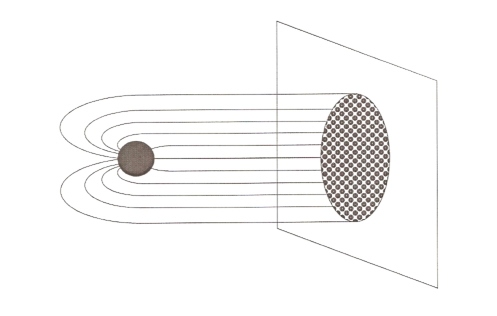
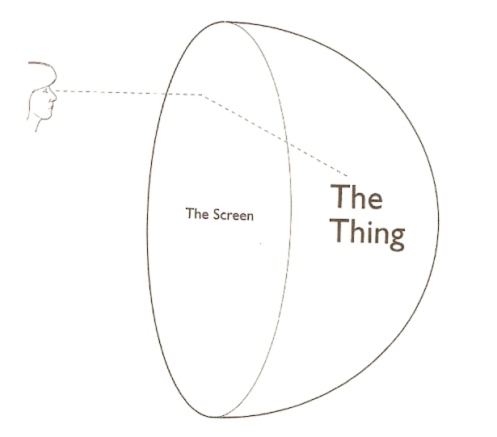
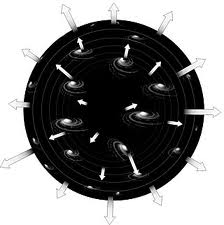
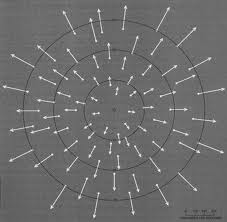

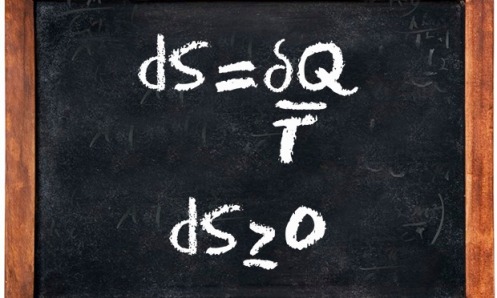

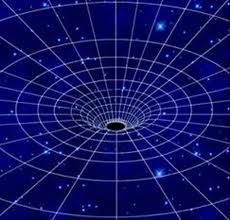
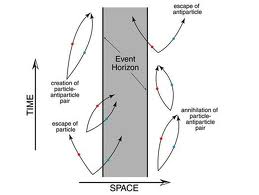
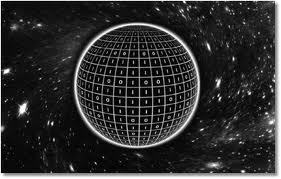

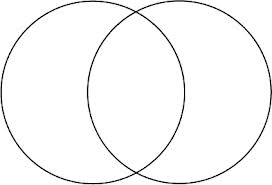
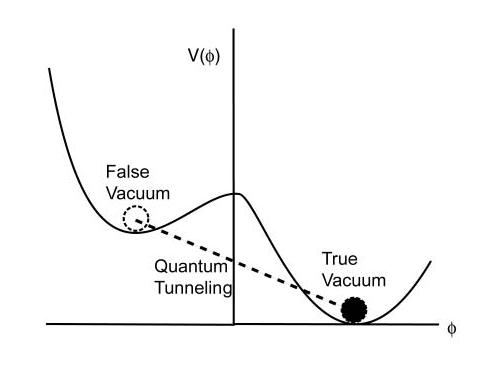


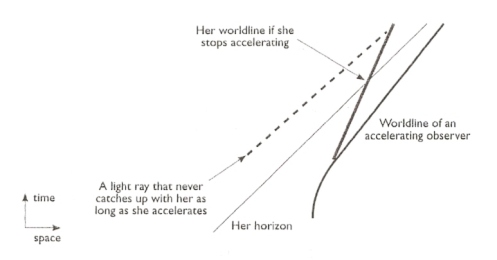


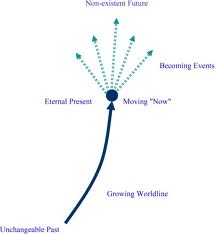
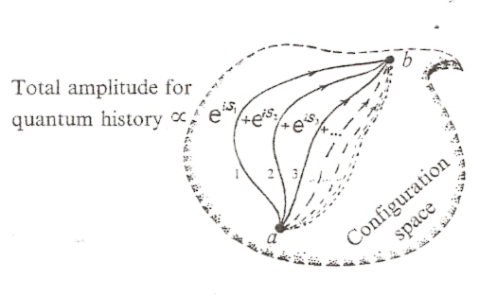
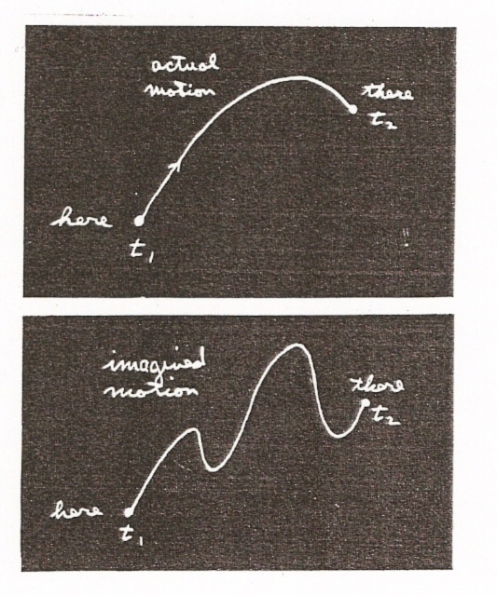

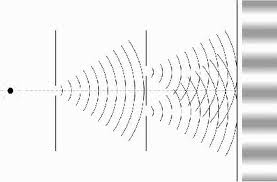
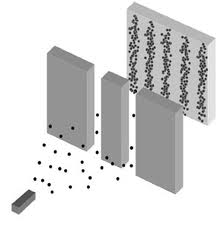

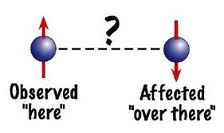


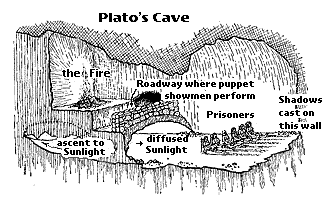

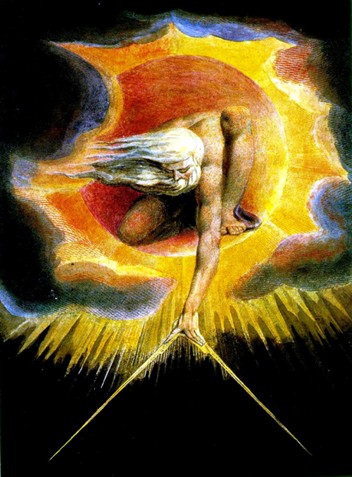

BEAUTIFUL! Long and beautiful. Well done. A book indeed. Wow.
I’m intrigued by the universe as well, check out my new blog; https://metaphyzics.wordpress.com
LikeLike